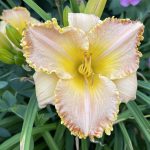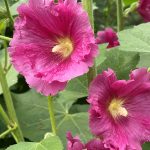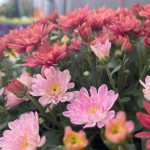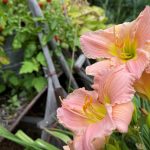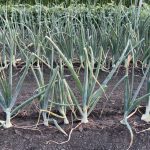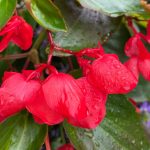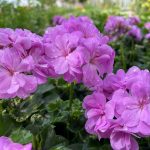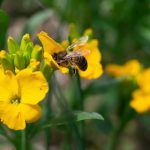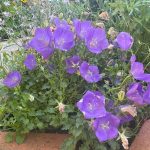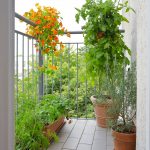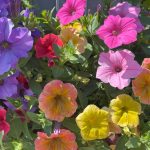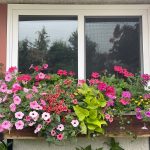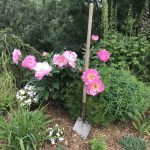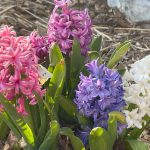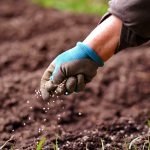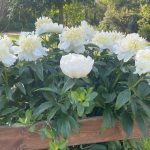Aphids and summer go hand in hand, and they can be particularly bad when a wet spring is followed up by a hot, dry summer. While an infestation of aphids in your garden can seem like the end of the world, there’s no need to worry. There are are many ways to get rid of aphids!
As day length decreases and feeding pressure increases, these soft-bodied, pear-shaped, sap-sucking insects develop wings and fly to fresh territory.
This blog will delve into how aphids grow, garden plants aphids are particularly fond of, hallmark signs of an aphid infestation, and methods to reduce their populations and get rid of aphids!

Want the inside scoop on more gardening tips? Get early access to all my blogs and exclusive content by signing up for my newsletter!
How Aphids Grow and Affect Plant Health


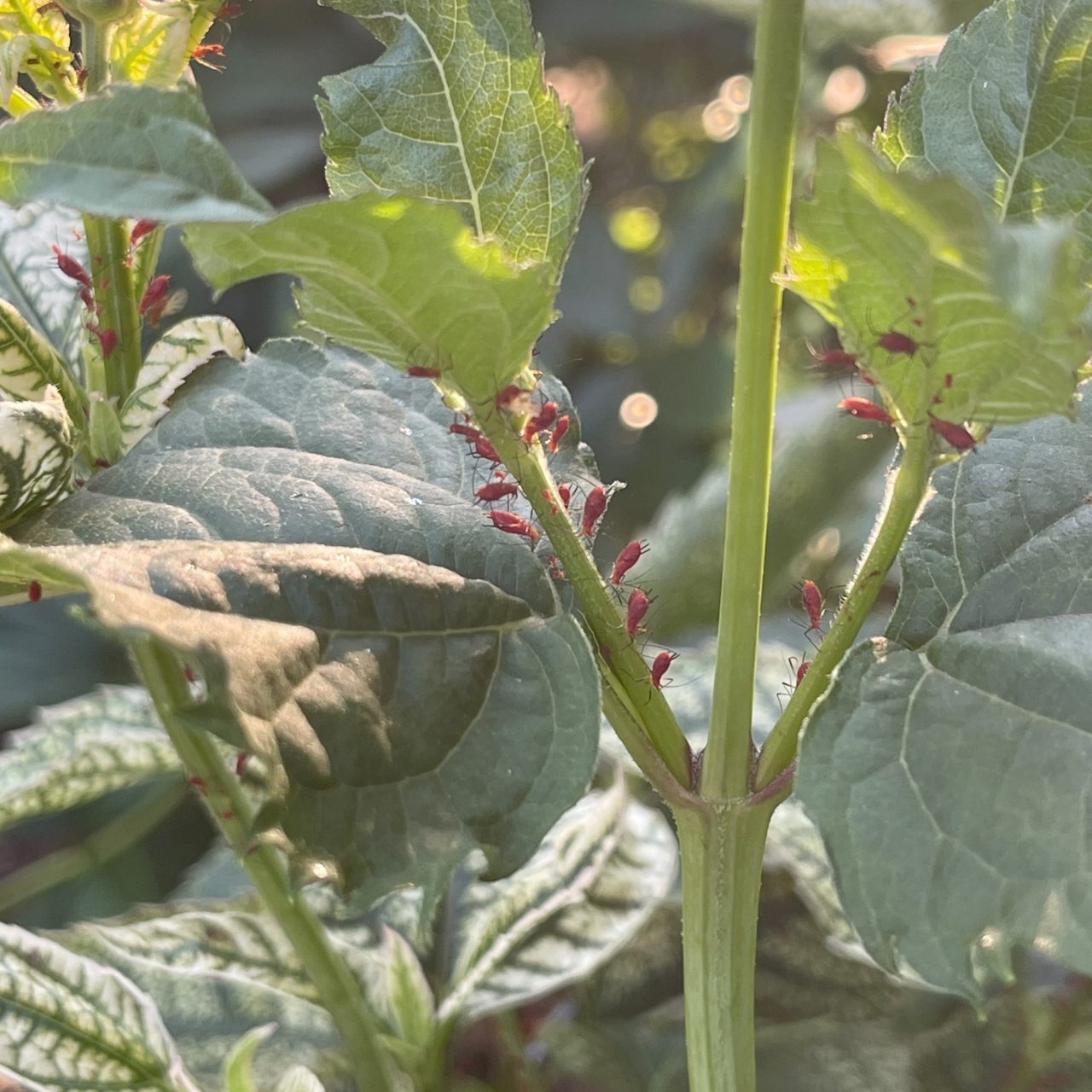
Small but mighty — often with destructive power. That’s how I would describe aphids.
Aphids are small, soft-bodied insects that come in various colours. They begin their invasions completely unnoticed and are innocuous until their numbers explode.
On the positive side, aphids play a mammoth role as a food source for invertebrates, birds, amphibians, reptiles, and small mammals. Aphids also serve as incubators for parasitic insects.
However, aphids can stunt plant growth, damage plant structures, and transmit diseases as they drill into plant vascular systems to obtain food.
The lifecycle of aphids consists of several stages or instars, but regardless, they reproduce rapidly. Females are capable of giving birth to live young without the need for mating, a process known as parthenogenesis.
The development from nymph to adult can occur within a week, depending on temperature and food availability.
As food and temperatures increase, so does their speed of reproduction. This means a small aphid infestation can quickly escalate into a full-blown invasion if not addressed promptly.
Aphids feed on plant sap, using their sharp mouthparts to pierce plant tissue and extract vital nutrients.
As they feed, aphids excrete a sticky substance called honeydew through two cornicles, which look like tailpipes located on the back end of their body; which serves as a food source for ants and other insects.
Annual and Perennial Plants that Aphids are Attracted To
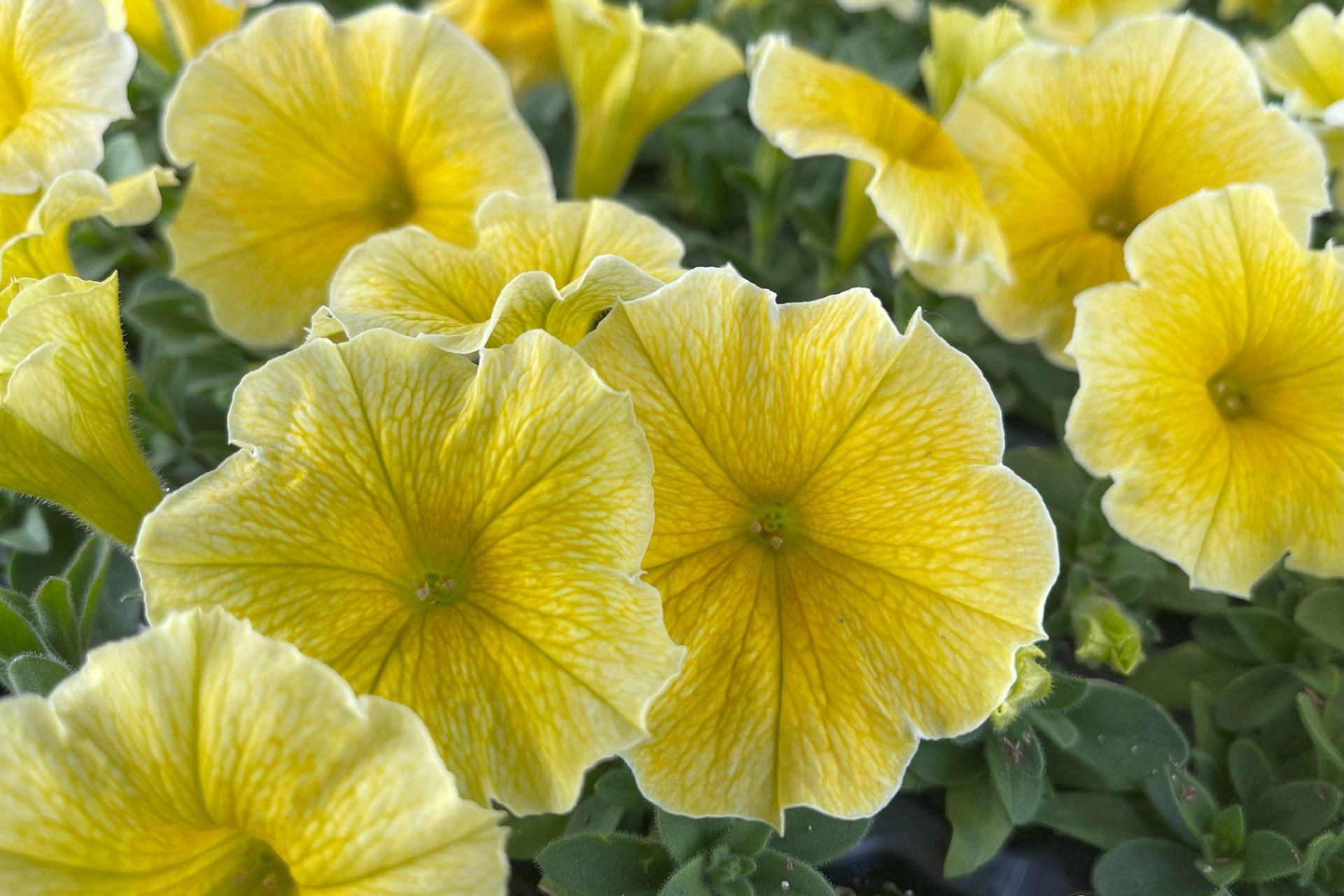
Aphids, like all garden pests, have quite discerning taste. They are fond of a few vegetables, annual flowers, perennials, trees, and shrubs, and different species of aphids are attracted to specific kinds of plants.
And it doesn’t matter if the plants are in hanging baskets, planters, raised beds, or flowerbeds; aphids will find them.
Listed below are plants that aphids love to frequent, but there are more plants that they will feed on.
On the annual scene, aphids love: Calibrachoa (Million Bells), Chrysanthemums, Sweet Potato Vine (Ipomoea), Petunias, Snapdragons, and Sunflowers.
Vegetables notorious for attracting aphids include: peppers, eggplants, and tomatillos.
Perennial plants that aphids like are attracted to include: Asters, Chrysanthemums, Lupines, and Heliopsis (False Sunflowers).
Aphids commonly feed on the following trees and shrubs: Aspens, Manitoba Maples, Cherry, and Plum species trees, Roses, and Caragana shrubs.
Telltale Signs of an Aphid Infestation

1. Unusual White Flecks on Plant Foliage
Spotting odd white flecks on plant foliage is the first sign that leads me to check closer for aphids.
Aphids grow on the most tender and juicy parts of a plant, like where the newest leaves emerge, on soft green stems, developing flower buds, flower petals, and they often hang out on the undersides of the leaves.
As aphid nymphs develop, they molt several times before reaching maturity, casting off white exoskeletons that look like white specks that land on the tops of the leaves below.
If you look closely, many of these exoskeletons look like aphid bodies.
2. A Shiny Sticky Residue Left Behind on the Leaves
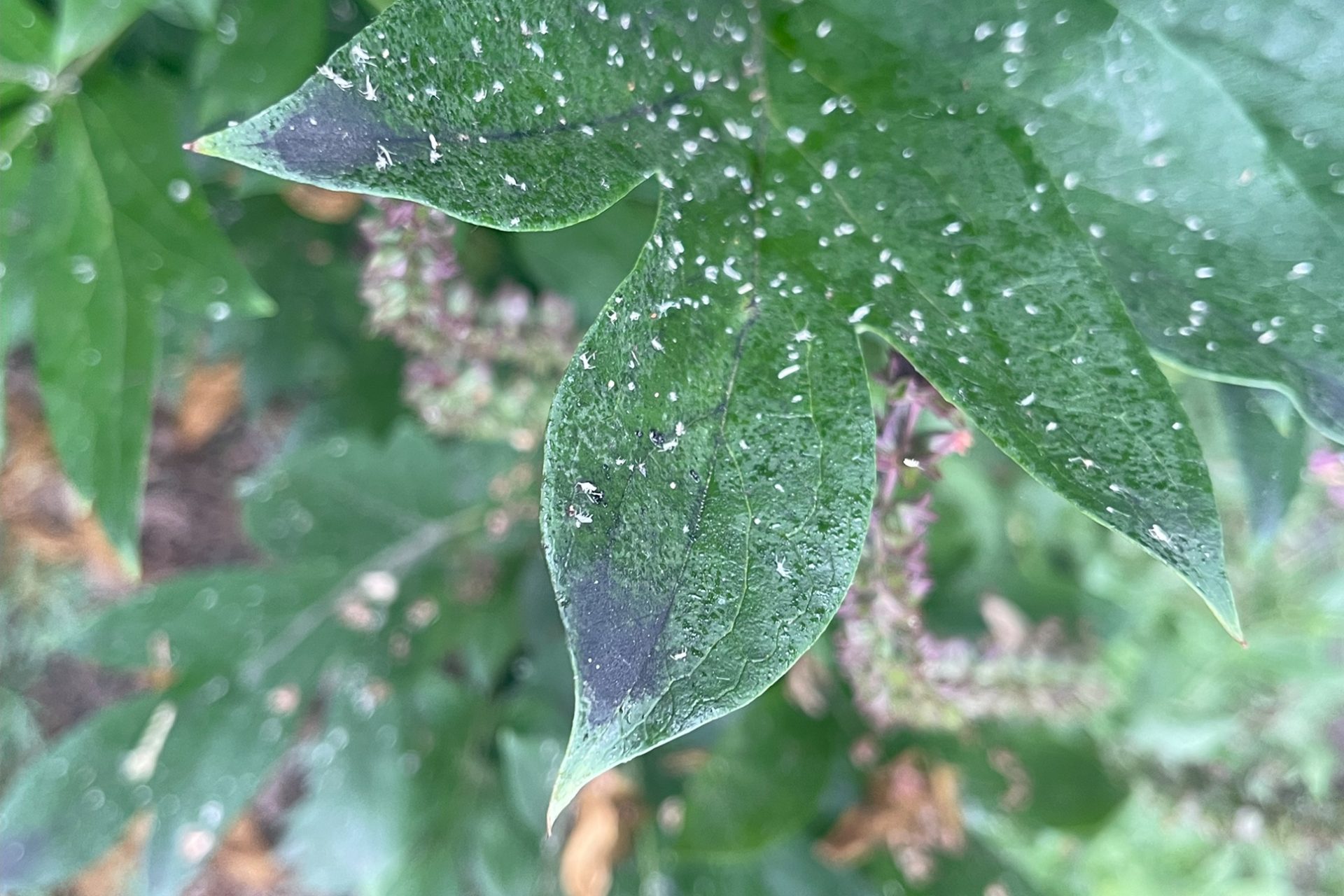
Another clear indicator of aphids is the shiny, sticky residue they leave behind.
The leaf sheen comes from a sweet liquid excreted through tailpipes called cornicles at the back end of the aphids’ bodies as it passes through their system from the front end, where aphids drill their feeding apparatus into tender plant phloem tubes that carry sugar and nutrients.
If you notice a sticky or shiny film on the leaves or a glossy, sticky residue on nearby surfaces, even sidewalks and lawn furniture, it is likely a result of aphid activity.
Honeydew can also create an ideal environment for the growth of black, sooty mold on the tops of leaves.
3. You Can See the Aphids

Aphids have pear-shaped bodies, are typically about 1 to 3 millimetres long, and are easily seen with the naked eye.
Aphids are often green in colour, but they are also peach-coloured, brown, black, red, or yellow.
Aphids are usually found in large numbers, making them relatively easy to spot.
Start by examining the tops and bottoms of your plants’ leaves, stems, buds, and flowers.
4. Damaging Effects on Plant Growth

The impact of aphids on garden plants goes beyond physical damage, and infested plants often exhibit stunted growth, wilting, yellowing or curling leaves, and distorted or deformed new growth.
Another concern with aphids is their ability to transmit viral or bacterial diseases to your houseplants as they pierce the leaves. These diseases can cause discoloration, deformation, and even death of the affected plants.
5. An Uptick in Insect Activity

When there are a lot of aphids in an area, you will often see more insect activity, particularly with ants and ladybugs, but for two different reasons.
Ants are attracted to the aphid honeydew because it is a food source for them.
Ants and aphids develop an interesting symbiotic relationship. The ants protect the aphids while the aphids provide the ants with food.
Aphids also attract ladybugs because aphids are a major protein source for ladybugs at all stages of development.
Mature ladybugs are voracious aphid consumers, eating 50 or more aphids per day.
3 Simple Methods to Control Aphid Populations
Aphids are relatively easy to deal with in a garden setting if the infestation is caught in time.
Fortunately, simple and effective methods exist to control these pesky insects without resorting to harsh chemicals.

Want the inside scoop on more gardening tips? Get early access to all my blogs and exclusive content by signing up for my newsletter!
1. Plain Water Spray

When dealing with aphids, my modus operandi now is a clear water spray, and I rarely resort to any other method because it is so successful.
I know this sounds impossibly elementary, even I wasn’t a believer at first, but I tried it and it worked. And I love how it keeps pollinators safe.
Related: 5+ Ways to Create A Thriving and Pollinator-Safe Garden
Here’s how I spray the aphids off: I remove any garden hose accessories but keep the adjustable on/off valve attached. Then, I open the valve slightly to produce a stream of water strong enough to knock the aphids off the plant.
Aphids are tiny, so they don’t need a full-blast force.
Then, I work my way through the plant, knocking off aphids from stems, buds, flowers, and both sides of the leaves with that steady stream of water. The wingless aphids cannot get back on the plant, so they die where they land.
This may need to be repeated every 3-4 days for a while, but it will reduce the aphid populations.
2. Homemade Insecticidal Soap

Homemade aphid sprays offer a cost-effective and eco-friendly solution for eliminating these pesky pests from your garden plants without harmful chemicals.
This soapy solution works by suffocating and dehydrating the aphids, eliminating them from your plants.
Create your own insecticidal soap by mixing a mild liquid dish soap with water.
To create this spray, mix 5 ml (1 tsp) of mild liquid dish soap (I prefer Dawn) with 1 litre (1 quart) of water in a spray bottle. Never use dishwasher pellets or granules.
Pour the solution into a spray bottle, shake the mixture well to ensure it is thoroughly combined, and apply it directly to the affected plants. Remember to cover both the tops and undersides of the leaves, as aphids tend to hide and feed on the undersides.
Repeating the spray application every few days is recommended until the aphid infestation is under control.
3. Ready-Made Insecticidal Soap
One of the most effective and safe chemical options for aphid control is insecticidal soap. This type of soap is specifically formulated to target soft-bodied insects like aphids while being safe for plants.
It works by suffocating insect pests upon contact, disrupting their cellular membranes and causing them to dehydrate.
Insecticidal Soaps are among the safest insecticides, as they are available in natural and organic solutions that don’t leave a harsh residue.
Insecticidal soaps are safe for most plants, but double-check the label to see if your particular plant is sensitive.
They are also safe to use around children and pets, making them a popular choice among plant enthusiasts and parents, but check labels.
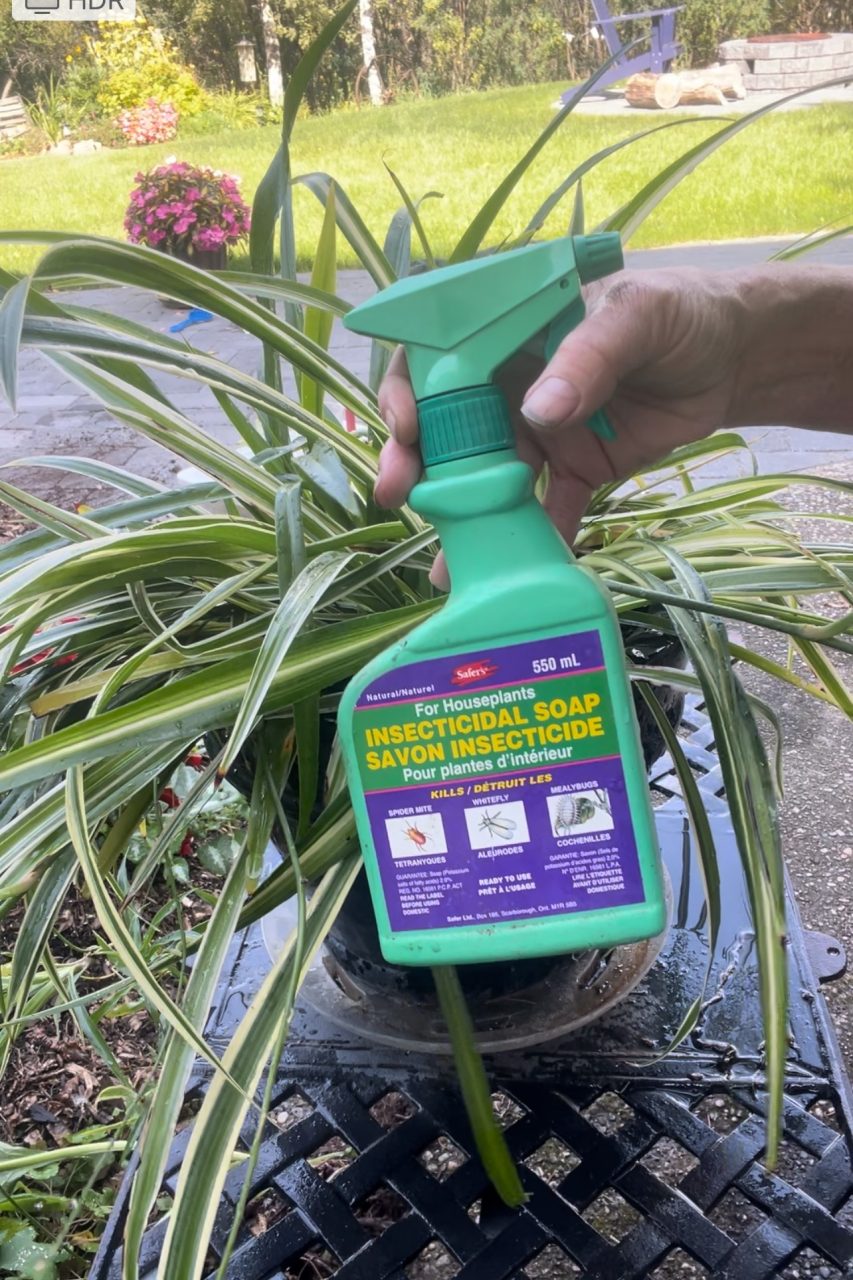
Some insecticidal soaps are ready to use, but others come in a concentrate that requires dilution. Please follow all labels for constitution instructions.
Insecticidal soap can be sprayed directly on the affected areas of the plant where the aphids typically congregate, such as the tips of new growth or the undersides of leaves, leaves, and stems.
Insecticidal soaps, homemade or purchased, must be reapplied after a rain.
Getting Rid of Aphids
While aphids can cause a lot of damage to your plants, there are many ways to remove them from your garden and ensure a beautiful bounty!
By carefully watching you garden for any signs of aphids, and acting as soon as you notice an infestation, you can reduce the amount of damage aphids cause!
If you have more questions about aphids, common pests, or anything else garden related, be sure to check out my other blogs and sign up for my newsletter!
More to Explore
- The Best Annual & Perennial Flowers for Your Zone 3-4 Pollinator Garden
- 6 Ways to Care for your Garden in Hot, Dry Weather
- 8+ Ways to Manage Hollyhock Rust Infections
- A Practical Guide to Growing Beautiful, Eye-Catching Petunias
- 7 Frequently Asked Questions About Growing Petunias
- The Complete Guide to Raised Bed Gardening
- How to Master Your Shade Garden: A Complete Guide to Growing Annuals and Perennials in the Shade
- Understanding Perennial Seasons of Bloom [+ Perennial Flowering Reference Chart]
©Sharon Wallish Murphy ©Gardening with Sharon


